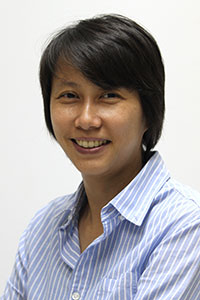It was almost 10pm on a weekend night. I thought it would be OK to take a bus that ran under the BTS route from the National Stadium station along Sukhumvit Road to get to Phra Khanong.
But I was wrong. It took me about an hour to get through just two blocks crammed with high-end department stores. The road was jam-packed, including the bus lane.

I gave up and left the overcrowded bus to take the skytrain instead. But those bus passengers who couldn't afford expensive rail transport were stuck in traffic with nowhere to go. They would have been lucky to get home by midnight.
In developed countries, a bus lane would be allocated exclusively for public transport. Violators who drive private vehicles on the lane and obstruct public transport would face a hefty fine.
Not here. A bus lane overcrowded with private cars is a common sight. The masses that use public transport are never the priority. This happens every day in any bus lane in Bangkok or in the BRT lane on Narathiwat Ratchanakharin and Rama III roads.
Being born poor, having little education and working in blue-collar jobs in Thailand is equivalent to not existing in this country. Looking at the exhausted faces of the passengers on the night bus, a common sarcastic remark on inequality came to my mind, that poodles here live better lives than the poor.
Another incident that reaffirmed my observation that the poor have no place in policy-makers' eyes is their proposal to solve the problem of traffic congestion around Sanam Luang.
Several attempts have been made over the years to solve heavy traffic around the Grand Palace and Sanam Luang. All have failed because tour coaches refuse to drop their customers at the site and park elsewhere.
Instead of making tour buses follow set rules, the parliamentary tourism sub-committee wants to dismantle bus stops at the corner of Sanam Luang opposite the Fine Arts Department to make room for tour buses. Another proposal was to use the Sanam Luang grounds as a drop-off spot for tourists.
Fortunately, the proposals are still pending.
But the very idea of cancelling an inter-change bus stop and using a public ground to cater to tourists who probably come to Thailand only once in their lifetime, without consulting the locals who rely on mass transport every day, is unacceptable.
Earlier, the Bangkok Metropolitan Administration tried to regulate traffic in that area by telling bus operators to drop off and pick up the tourists near Sanam Luang and park their vehicles at the former southern bus terminal in the Pinklao area. But the operators complained the terminal was too small to accommodate 500 buses every day.
The real reason is it's simply more convenient for the drivers to park the vehicles near the Grand Palace without worrying they are causing traffic congestion in the old town area. Tour buses do not want to waste their time and gas running between Sanam Luang and the carpark.
Now tour buses drop off their customers in front of the Fine Arts Department. Tour operators say the footpath is too small, not to mention the cycle lane that takes the left-most part of the street. All this makes it inconvenient for big groups of tourists to hop from their buses to visit the Grand Palace.
Proponents say moving the bus stops in front of the department will provide more space for tourist flows and provide better safety for the 8,000-25,000 tourists that visit the palace each day.
But the proposal never mentioned how many thousands of local people are using the bus stop that they wish to take away.
Nor has a survey has been conducted to gauge demand by commuters -- and there should be many more than the tourists -- who use the popular inter-change bus stop.
If the bus stop has to be removed, it shouldn't affect local commuters who have to rely solely on public transport.
A new inter-change bus stop should be relocated to an equally convenient area. And the entire old town area must be made car-free zone; no tourist buses and private vehicles allowed.
Elsewhere in the world, tour buses at well-run tourism destinations are not allowed to park or even drop off the tourists at the front gate, the way operators are allowed to do so at Sanam Luang.
If the tourists want to visit the Temple of Emerald Buddha and the Grand Palace, let them walk. The destinations are more than worthwhile. In any country, a parking lot would be provided and allow tourists to walk in a car-free zone.
Sirinya Wattanasukchai is an assistant news editor, Bangkok Post.
